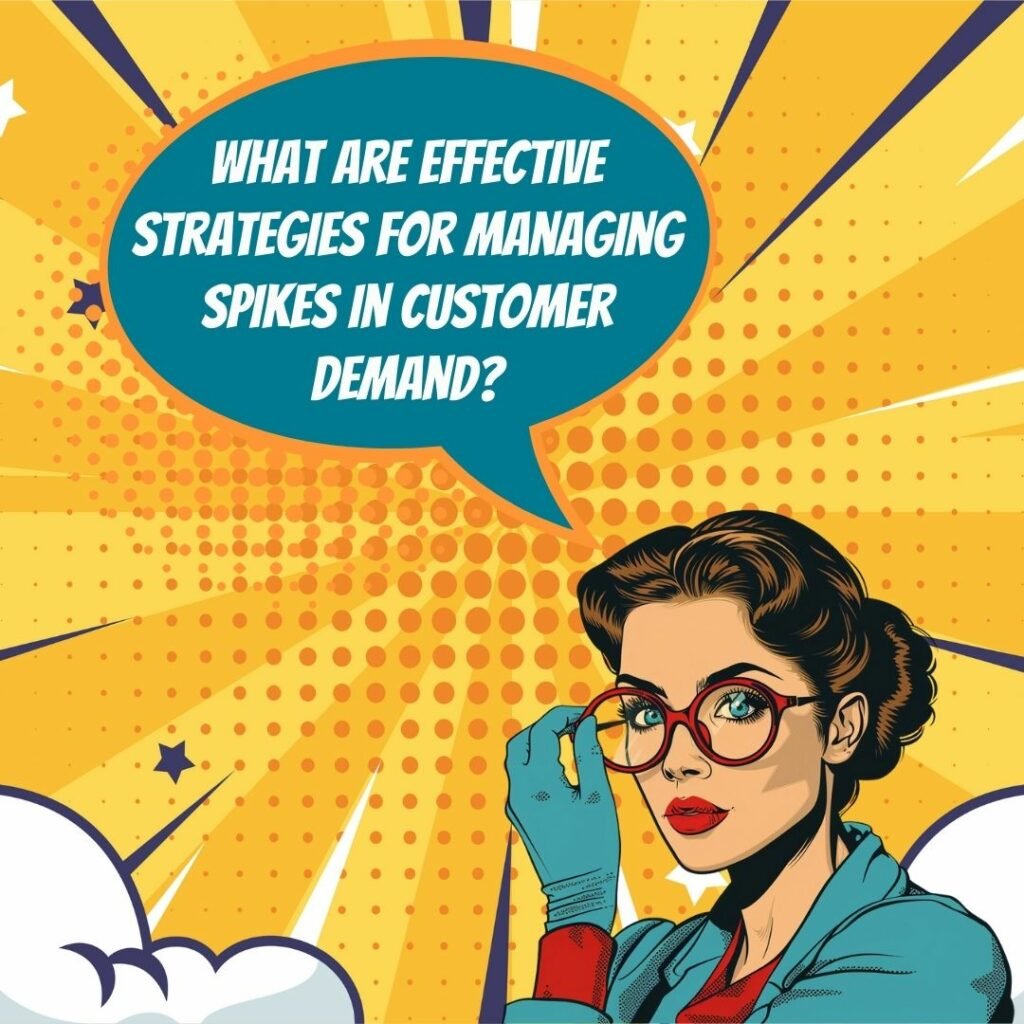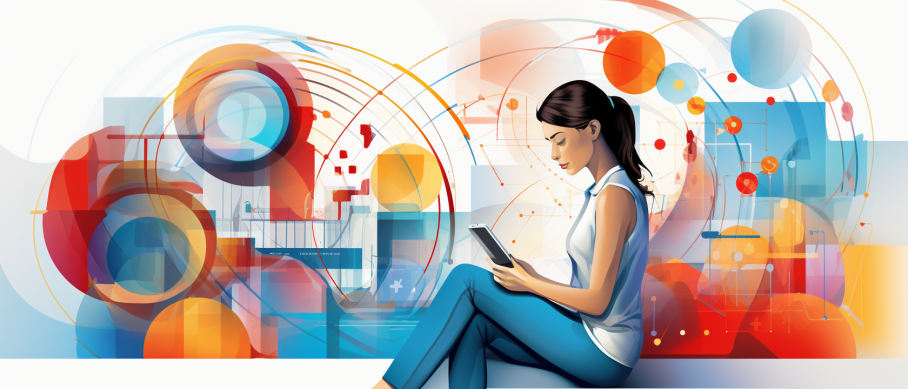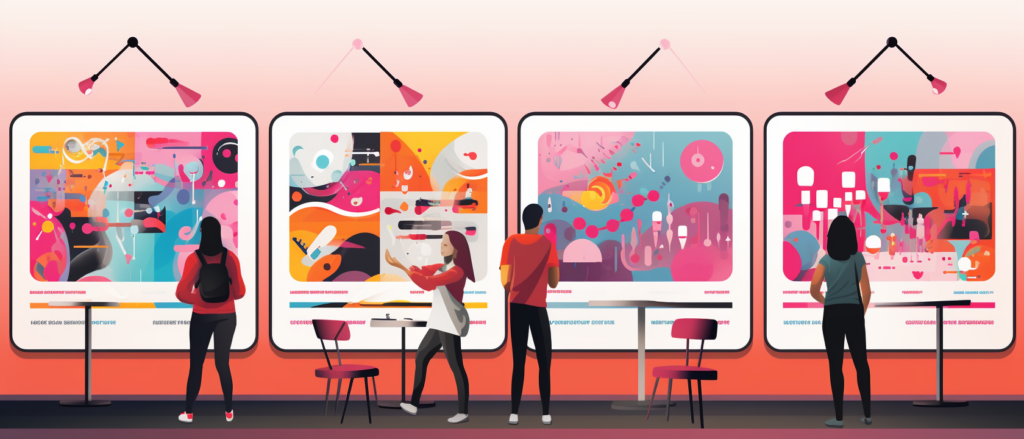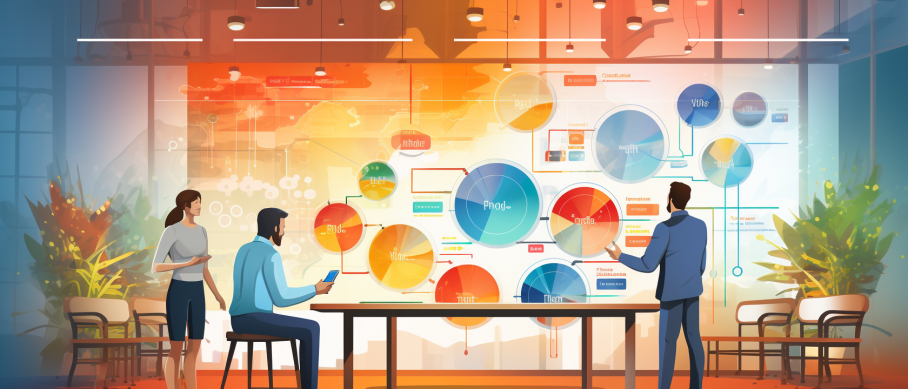Key Takeaways
✅ Invest in Customer Experience: Understanding what your customers truly want can change the game. Dive into who they are, from age to interests, and reshape your offerings to meet their desires. Upgrade to tech-savvy solutions like AI for real-time adaptability. Why does this matter? Businesses focusing on customer experience outperform competitors by nearly 80%.
✅ Emphasize Agility and Proactivity: Let's face it, the world doesn't stand still and neither should you. Equip your business with the latest tech to move at lightning speed. Spot issues before they become complaints. Companies leading in agility grow revenue 37% faster and are 30% more profitable than their slower peers.
✅ Leverage AI-Powered Resources and Human Interaction: Mix technology with a human touch for a winning formula. AI can handle the heavy lifting, but never underestimate the power of a real person's empathy and understanding in solving complex issues. Studies show that 70% of customers prefer human agents for sensitive matters.
 Introduction
Introduction
Have you ever wondered why some businesses seem to effortlessly ride the waves of change, while others struggle to keep their heads above water? At the heart of this divide is the challenge of Handling Increased Customer Demands. The rules of the game have changed; customers are now in the driver's seat, armed with higher expectations and a plethora of choices.
This shift isn’t just a fleeting trend but a new reality. Businesses that can adapt quickly, offering more than just products or services but a seamless experience, are the ones writing their success stories in bold letters. From implementing cutting-edge technology to streamlining operations and placing a premium on human connections, the strategies are as diverse as they are dynamic. But, how exactly can your business not only meet these rising demands but turn them into opportunities for growth and customer loyalty?
Cue this article: your roadmap to navigating the complexities of modern customer expectations. Here, we unravel the art and science of maximizing revenue and enhancing customer satisfaction, without losing sight of your brand's core values. Get ready for actionable insights and innovative tactics that promise to transform challenges into stepping stones for success. Let's embark on this journey together and uncover the secrets to thriving in today's customer-centric landscape.
Top Statistics
| Statistic | Insight |
|---|---|
| 74% of consumers are at least somewhat likely to buy based on experiences alone. | This shows the immense impact of customer experience on purchase decisions, highlighting the need for companies to focus on creating exceptional experiences. |
| 97% of consumers say customer service is crucial for brand loyalty. | Underscores the connection between customer service and loyalty, suggesting businesses that excel in service can foster a dedicated customer base. |
| 85% of consumers want businesses to anticipate their needs. | Emphasizes the growing expectations of consumers for personalized and proactive service, encouraging companies to leverage predictive analytics. |
| 86% of respondents believe AI will have a transformative impact on customer experience. | Signifies the anticipated role of AI in revolutionizing how companies interact with their customers, through automation and enhanced personalization. |
| 79% of leaders believe customer service should be available across all channels that customers use. | Highlights the importance of an omni-channel strategy in meeting customer expectations for service accessibility and convenience. |
Understanding the Shift in Customer Demands
Today's customers hold the reins, dictating what they expect from businesses and how they want those expectations met. The shift towards customer-driven demands has pushed businesses to adapt swiftly to remain in the competition. For instance, grocery stores now widely offer pickup and delivery services, catering to the need for convenience and safety, particularly highlighted during the pandemic era. Similarly, contact centers have pivoted towards remote work, reducing physical constraints and adapting to both employee and customer needs. These changes illustrate a broader truth: adaptability isn't just beneficial; it's essential.
Identifying Key Areas for Improvement
To stay ahead, businesses must first pinpoint where changes can have the most significant impact. Areas rich in data, like contact centers, are gold mines for improvement. Here, customer feedback, performance data, and communication logs can offer a treasure trove of insights. By diving into this data, businesses can identify inefficiencies, understand customer pain points, and refine their strategies. Regular reviews of business analytics help in pinpointing tasks that waste time or products that no longer meet customer demands, paving the way for smarter, more customer-focused decisions.
Streamlining Operations
Efficiency in operations directly ties to customer satisfaction. By optimizing staff schedules, simplifying tasks, and focusing on interactions that customers find valuable, businesses can significantly enhance their operational efficiency. Adjusting store hours to better match when customers prefer to shop and introducing loyalty programs to reward repeat business are strategies that not only meet customer demands but also foster loyalty. These adjustments make businesses more agile, ready to meet their customers' needs whatever the circumstances.
Training and Empowering Staff
A versatile and well-prepared team is the backbone of any adaptive business strategy. Training staff to handle a variety of scenarios, including the unexpected, ensures that your business can keep running smoothly under any circumstances. Moreover, educating employees on the importance of valuing regular customers fosters an environment where every customer feels respected and welcomed. This focus on training ensures that your staff isn't just reacting to changes but thriving amidst them.
Prioritizing Customer Experience
In the realm of customer service, effortlessness is key. Minimizing the work customers need to do to get their issues resolved, recognizing the emotional components of customer interactions, and focusing on effective problem-solving can substantially elevate the customer experience. Prioritizing satisfactory resolutions over quick, impersonal responses can significantly boost customer loyalty. It's about ensuring that customers leave happier than they arrived, not just moving them through a service pipeline.
Implementing Technology and Feedback
Leveraging technology to gather and analyze customer data is more than a modern convenience—it's a strategic necessity. This data provides actionable insights, enabling businesses to swiftly adapt to new trends or address emerging issues. Equally important is establishing a closed-loop process for customer feedback, ensuring that every piece of input is used to refine operations and eliminate ineffective practices. This continuous loop of feedback and improvement keeps businesses dynamic, responsive, and, most importantly, aligned with customer needs.
Focusing on these areas allows businesses to respond to changing customer demands with agility and insight. By continuously adapting and refining strategies based on real feedback and data, companies can not only meet but exceed customer expectations in an ever-evolving market landscape.
AI Marketing Engineers Recommendation
Recommendation 1: Utilize predictive analytics to anticipate customer needs: Current data shows that predictive analytics can significantly improve customer service by forecasting future buying behaviors and preferences. By analyzing past customer interactions and purchasing patterns, businesses can anticipate what customers will want next, helping to meet demand more efficiently. For instance, a study by McKinsey & Company highlighted that companies leveraging advanced analytics can see a 10-20% increase in sales opportunities.
Recommendation 2: Embrace personalization at scale: With the rise of artificial intelligence and machine learning technologies, providing personalized experiences to a large customer base has become more feasible and effective. According to Epsilon, 80% of consumers are more likely to make a purchase from a brand that provides personalized experiences. Tailoring products, communications, and services to individual preferences based on collected data not only enhances customer satisfaction but also helps in efficiently managing resources to meet increased demands.
Recommendation 3: Invest in chatbots and automated customer service tools: Automation is a key trend for addressing increased customer demands without compromising the quality of service. Implementing chatbots and automated service solutions can help businesses handle a high volume of inquiries and support requests effectively. This allows for 24/7 customer service, ensuring immediate response times, which, as per Salesforce, 64% of consumers expect in real-time. Moreover, these tools can free up human resources to focus on more complex and nuanced customer needs, enhancing overall efficiency and customer satisfaction.
Conclusion
As businesses navigate the shifting sands of customer demands, the need to evolve and adapt has never been more critical. The modern customer reigns supreme, wielding power through their expectations and preferences. Companies that have embraced adaptability—like grocery stores optimizing for pickup and delivery or contact centers going remote—show us the path forward in staying relevant and competitive.
Identifying key areas for improvement and streamlining operations are foundational steps in this journey. By diving into the rich data of customer interactions and operational performance, organizations can pinpoint where adjustments are necessary. Something as simple as re-evaluating business hours or as complex as overhauling customer service protocols can make a significant difference in handling the ebbs and flows of demand.
Beyond logistics and strategies, the human element—training and empowering staff—emerges as a cornerstone of success. A well-prepared team can not only meet but exceed customer expectations, transforming challenges into opportunities for loyalty and growth. And, as businesses concentrate on reducing customer effort and investing in technology and feedback mechanisms, the path to a superior customer experience becomes clear.
The landscape of customer demands will continue to evolve, and businesses must remain vigilant and responsive. By prioritizing customer experience, leveraging data, and fostering a culture of flexibility and resilience, organizations can not only survive but thrive amid increased demands. Let’s take these insights not just as lessons but as a call to action. It's time to look ahead and reshape our strategies to meet, and exceed, the expectations of the modern customer.
FAQs
Question 1: What are the key challenges in handling increased customer demands?
Answer: The biggies are managing your team's workload, keeping customers happy, rolling with the punches as customer expectations change, and ensuring your service is both speedy and spot-on.
Question 2: How do customer expectations impact business operations?
Answer: Customer expectations set the bar for service, speed, and how personal your interactions feel. Nailing these aspects is key to keeping folks coming back for more.
Question 3: What are the benefits of proactive customer service?
Answer: Being proactive can cut down on customer headaches, boost satisfaction levels, and make the overall experience something to write home about.
Question 4: How can AI-powered tools help in managing customer demands?
Answer: AI buddies can offer support all day, every day. They're also whizzes at predicting the right number of staff you'll need and can help make sure your service quality is top-notch.
Question 5: What is the importance of customer feedback in managing demands?
Answer: Feedback is like gold dust. It shows you where you need to up your game and helps you tailor your services so they're just right for your customers.
Question 6: How can businesses stay agile in response to changing customer demands?
Answer: Investing in flexible tech, keeping a close eye on what customers are saying, and being ready to shift how you operate are all smart moves.
Question 7: What are some strategies for streamlining store operations?
Answer: Think about adjusting your opening hours, cutting back on less popular offerings, and introducing loyalty schemes to keep your regulars, well, loyal.
Question 8: How can staff be trained to handle increased customer demands?
Answer: Get your team skilled up in a range of roles for better flexibility, prep them for potential problems, and make sure everyone knows what's top priority.
Question 9: What are some effective ways to manage customer expectations?
Answer: Keep your customers in the loop with updates and how-tos, take their feedback to heart, and never stop looking for ways to make their experience even better.
Academic References
- Salesforce. "State of the Connected Customer." Salesforce Research. This pivotal research explores how customer expectations have evolved to place a premium on the experience provided by companies, underscoring the importance of personalization, with findings indicating that 80% of customers consider the experience a company provides as important as its products and services, and 73% expecting increased personalization as technology progresses.
- Dixon, M., Freeman, K., & Toman, N. (2010). "Stop Trying to Delight Your Customers." Harvard Business Review. This landmark study challenges the conventional wisdom of striving for customer delight, presenting evidence that minimizing customer effort is the key to loyalty, hence providing a more potent strategy for building customer loyalty than the efforts to "delight" them.
- Pragmatic Institute. "The Power of Customer References in Marketing." Pragmatic Institute. Highlighting the critical role of customer references in building trust and credibility, this article points out that references from current customers serve as a more authentic and convincing marketing tool than messages directly from sales or marketing departments, thus emphasizing their utility in establishing brand equity.
- He, Y., & Zhang, J. (2019). "Research on the Impact of Customer Demand Uncertainty on Production Planning." Journal of Manufacturing Systems, 53, 260-273. Exploring the complexities of managing customer demand in the face of uncertainty, this study presents insights into how fluctuations in demand impact elements of the supply chain like production planning, inventory management, and long-term investments, underscoring the critical nature of developing robust demand management strategies.












